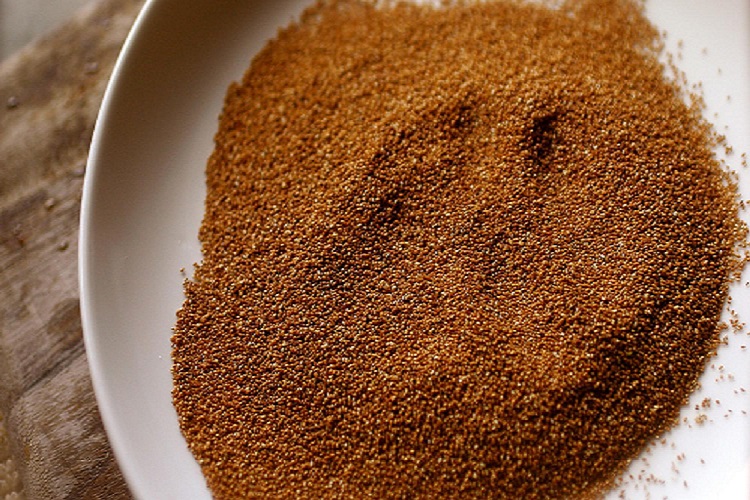
Welcome readers to the fascinating realm of teff flour. In recent years, this ancient grain has been gaining popularity for its unique nutritional profile and versatile culinary uses. Whether you’re a health-conscious individual looking for a gluten-free alternative or a food enthusiast eager to experiment with new flavors, teff flour has something to offer. In this blog post, we will delve into the world of teff flour, exploring its origins, health benefits, culinary uses, and where to buy it. Get ready to embark on an exciting journey through the delightful world of teff flour.
What is Teff Flour?
Teff flour is a gluten-free flour made from the tiny grain called teff. Originating from Ethiopia, teff has been a staple in Ethiopian cuisine for thousands of years. It is the smallest grain in the world, about the size of a poppy seed, and comes in different colors, including white, brown, and dark red. Teff flour is milled from the teff grain, resulting in a fine, earthy flour. Teff holds great cultural significance in Ethiopia, where it is used to make the traditional Ethiopian flatbread called injera. Injera is a sourdough-like bread that forms the foundation of Ethiopian meals, serving both as a utensil and a delicious accompaniment to various stews and dishes. In addition to its cultural significance, teff flour boasts a unique nutritional profile. It is rich in dietary fiber, protein, and essential minerals such as iron, calcium, and magnesium. This makes teff flour a nutrient-dense choice for those seeking a healthier alternative to traditional flours.
Health Benefits of Teff Flour:
Consuming teff flour offers a variety of health benefits. Let’s explore some of the key advantages of incorporating teff flour into your diet:
- Improved Digestion and Gut Health: Teff flour is an excellent source of dietary fiber, which aids in digestion and promotes a healthy gut. Its high fiber content can help prevent constipation, regulate bowel movements, and support the growth of beneficial gut bacteria.
- Enhanced Cardiovascular Health: Teff flour contains significant amounts of resistant starch, a type of carbohydrate that can improve heart health by reducing cholesterol levels and blood pressure. Additionally, teff is rich in the mineral potassium, which plays a crucial role in maintaining a healthy heart rhythm.
- Blood Sugar Regulation: Teff flour has a low glycemic index, meaning it doesn’t cause a rapid increase in blood sugar levels. This makes it an ideal choice for individuals looking to manage their blood sugar levels or those who have diabetes.
- Increased Energy Levels: Teff flour is a good source of complex carbohydrates, providing a sustained release of energy. This can help prevent energy crashes and keep you feeling energized throughout the day.
- Gluten-Free Alternative: For individuals with gluten sensitivities or celiac disease, teff flour is a fantastic gluten-free alternative. It can be used as a substitute for wheat flour in various recipes, allowing those with dietary restrictions to enjoy their favorite baked goods without compromising taste or texture.
Culinary Uses of Teff Flour:
Teff flour’s versatility extends beyond its nutritional benefits. It can be used in a wide range of culinary applications, adding depth and flavor to dishes. Here are a few exciting ways you can incorporate teff flour into your cooking:
- Baking Delicious Gluten-Free Breads, Cakes, and Cookies: Teff flour lends a unique nutty flavor to baked goods. It can be used as a standalone flour or mixed with other gluten-free flours to create delicious bread, cakes, and cookies. Experiment with different recipes, such as teff banana bread or teff chocolate chip cookies, to explore the full potential of teff flour.
- Creating Nutritious Pancakes or Crepes: Add a nutritious twist to your breakfast by using teff flour in pancake or crepe batter. The earthy flavor of teff flour pairs well with fruits, nuts, and honey, creating a delightful and wholesome morning treat.
- Thickening Soups, Stews, or Sauces: Teff flour can be used as a natural thickener in soups, stews, or sauces. Its fine texture blends well with liquids, creating a smooth and creamy consistency. Simply add a tablespoon or two of teff flour to your desired dish and simmer until thickened.
- Incorporating into Smoothies or Energy Bars: Boost the nutritional value of your smoothies or energy bars by adding a spoonful of teff flour. It adds a subtle nutty flavor and provides an extra dose of fiber and protein, making your snacks more satisfying and nourishing.
How to Use Teff Flour in Recipes:
Now that you’re familiar with the culinary possibilities of teff flour, let’s explore some practical tips on how to incorporate it into your everyday cooking:
- Substitution Ratios: When using teff flour as a substitute for traditional flours, it’s essential to consider the differences in texture and absorbency. As a general rule, you can replace up to 25% of the total flour in a recipe with teff flour without major adjustments. However, for recipes that require gluten development, such as bread, it’s best to combine teff flour with other gluten-free flours like rice flour or tapioca flour for better results.
- Highlighting the Unique Flavor and Texture: Teff flour has a distinct nutty flavor and a slightly gritty texture. Embrace these characteristics by incorporating teff flour into recipes that complement its natural taste. For example, try making teff flour-based muffins with added nuts or seeds to enhance the earthy flavor and add a delightful crunch.
- Combining with Other Ingredients: To maximize both taste and nutrition, consider combining teff flour with other ingredients. For instance, you can mix teff flour with mashed bananas or applesauce to add natural sweetness and moisture to your baked goods. Additionally, adding spices like cinnamon or cardamom can elevate the flavor profile of teff flour-based recipes.
Where to Buy Teff Flour:
If you’re excited to start your teff flour culinary adventures, you might be wondering where to find this unique ingredient. Fortunately, teff flour is becoming increasingly available in stores and online. Here are a few reliable sources where you can purchase high-quality teff flour:
- Local Health Food Stores: Check out your local health food stores, as they often carry a variety of gluten-free flours, including teff flour. Ask the store staff for recommendations and explore different brands and varieties.
- Online Retailers: Several online retailers specialize in gluten-free products and offer a wide selection of teff flour. Websites like Amazon, Thrive Market, and Bob’s Red Mill provide convenient options for purchasing teff flour from the comfort of your home.
Conclusion:
In conclusion, teff flour opens up a world of culinary possibilities while offering numerous health benefits. This ancient grain, with its unique nutritional profile, has made its way into modern kitchens, captivating food enthusiasts and health-conscious individuals alike. From baking delicious gluten-free treats to thickening soups and sauces, teff flour adds a distinctive flavor and texture to a variety of dishes. So, why not embark on your teff flour culinary adventures and experience the delightful world of this versatile ingredient? Share your favorite teff flour recipes and feel free to reach out with any remaining questions. Happy cooking!






